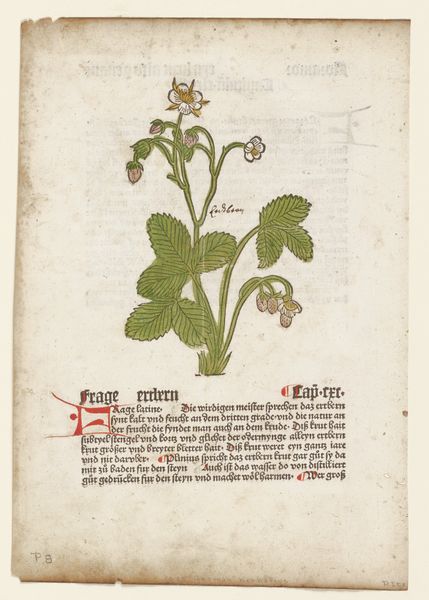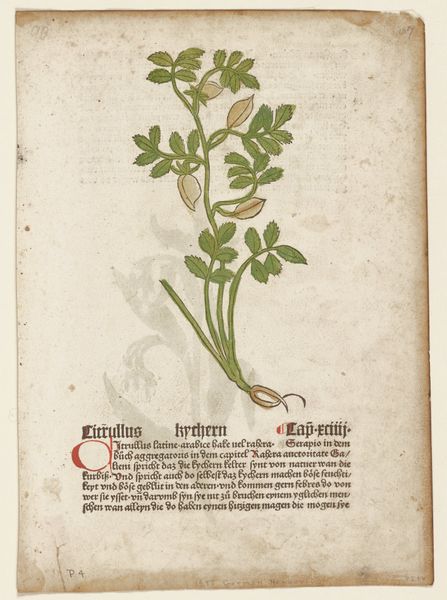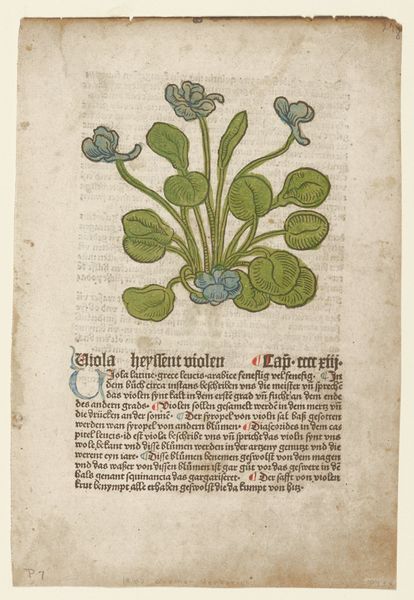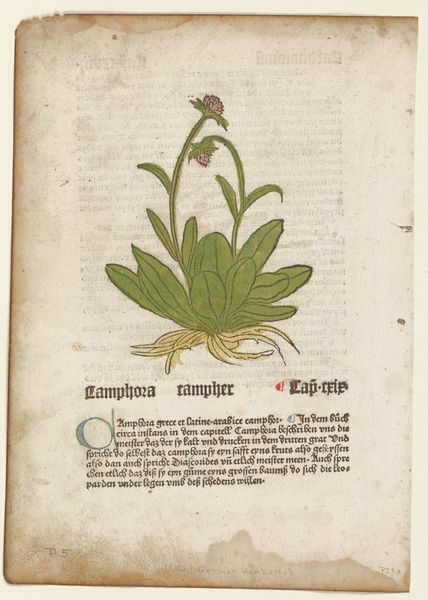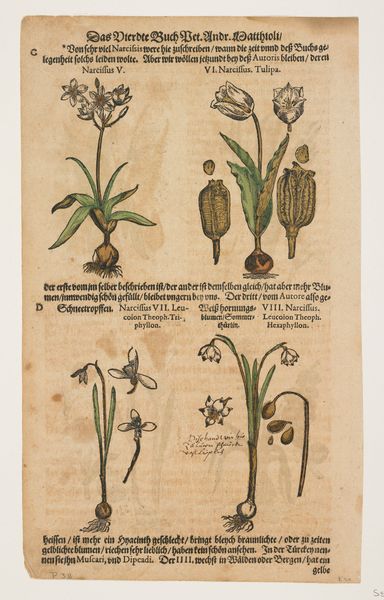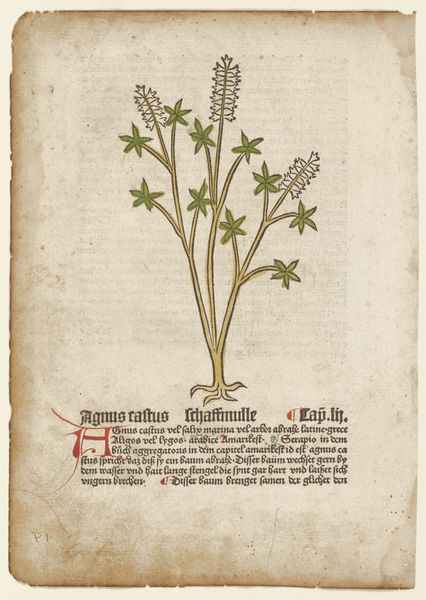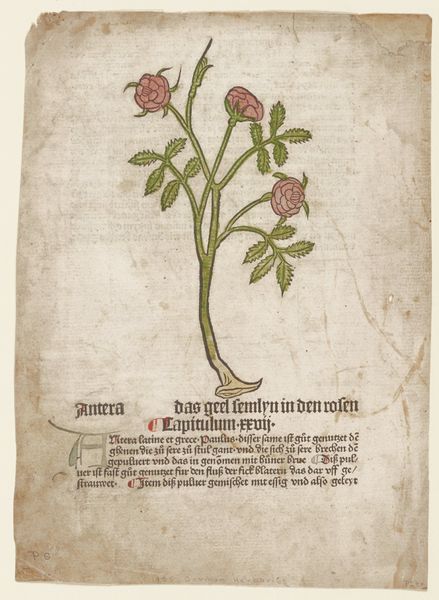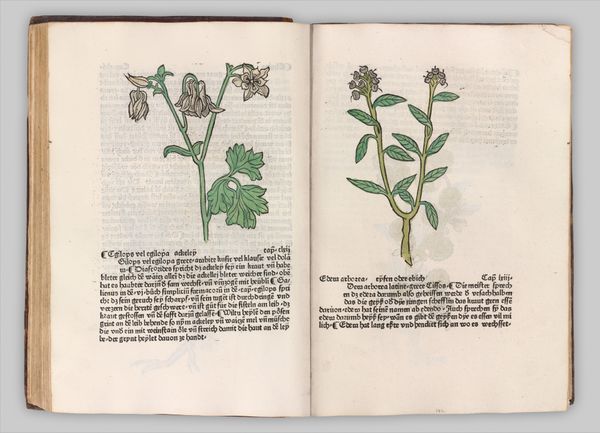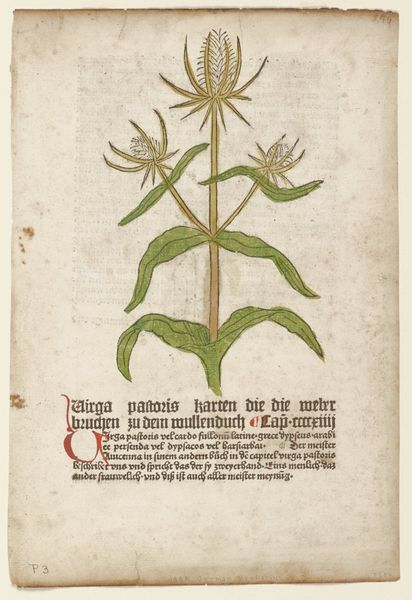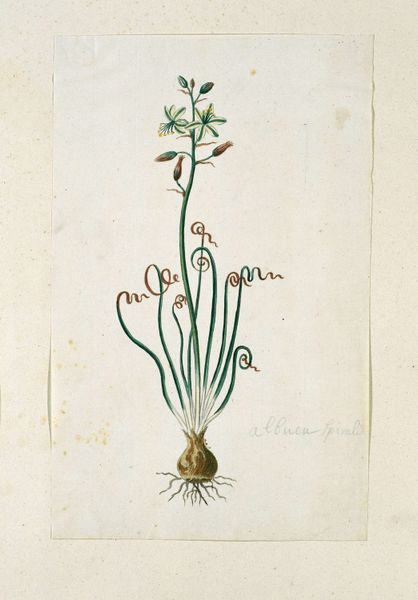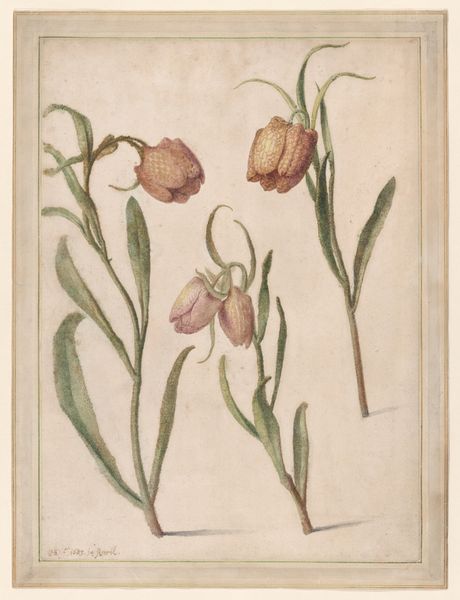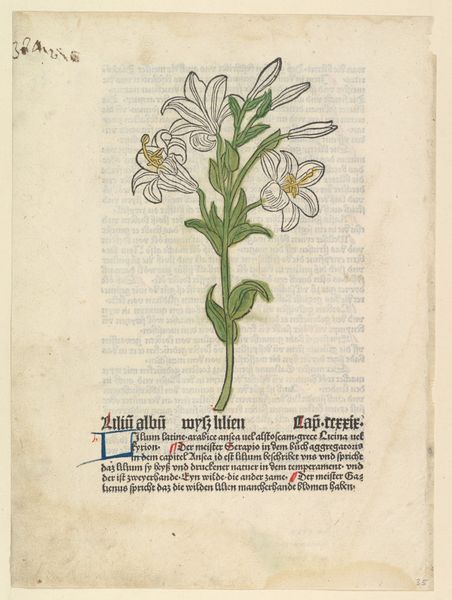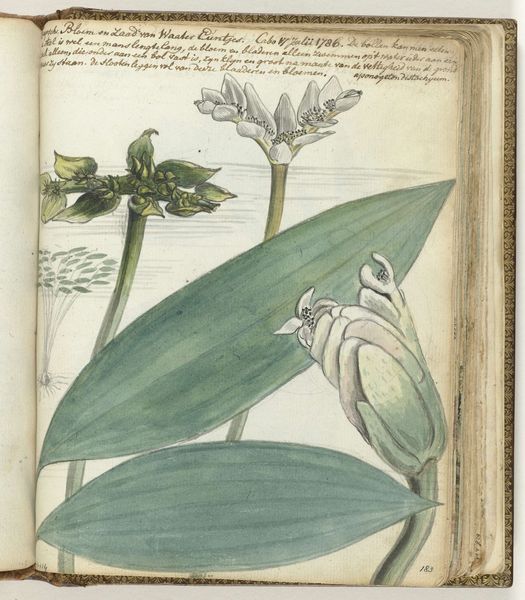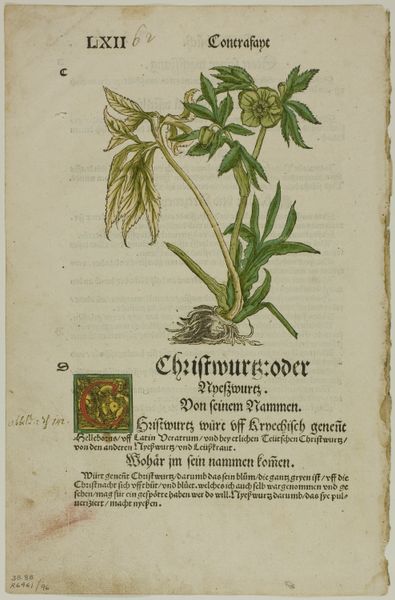
Thistle (recto) and Thistle buds (verso) from Gart Der Gesundheit (also called Hortus sanitatis, or Garden of Health), Plate 32 from Woodcuts from Books of the 15th Century c. 1485 - 1929
0:00
0:00
drawing, print, paper, woodcut
#
drawing
#
medieval
# print
#
paper
#
folk-art
#
woodcut
#
northern-renaissance
Dimensions: 165 × 95 mm (image, recto); 145 × 72 mm (image, verso); 265 × 200 mm (sheet)
Copyright: Public Domain
Erhard Reuwich made this woodcut of a thistle with ink and paint in the late fifteenth century. It’s a page from “Gart der Gesundheit,” or “Garden of Health,” a book cataloging plants and their medicinal properties. The image is both a work of art and a scientific illustration, reflecting a culture where the boundaries between art and science were more fluid than they are today. The printing press, developed only decades earlier, enabled the wide distribution of knowledge, transforming universities and intellectual life. Made in the German-speaking lands, the “Garden of Health” reflects the burgeoning interest in naturalism and empirical observation that would blossom in the Renaissance. The book itself played a role in standardizing knowledge about plants, shaping medical practices, and influencing the development of botany as a discipline. To fully understand this image, a historian might consult early printed books, medical treatises, and botanical texts. The meaning of this artwork is not fixed, but is something that evolves with the changing social and institutional contexts in which it is viewed.
Comments
No comments
Be the first to comment and join the conversation on the ultimate creative platform.
